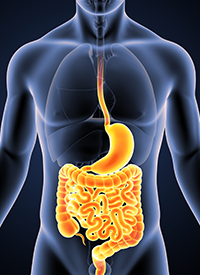News
Article
Second-Line Trastuzumab Plus Ramucirumab/Paclitaxel Elicits Activity in HER2+ Gastric/GEJ Cancer
Author(s):
Trastuzumab plus ramucirumab and paclitaxel yielded promising efficacy and a manageable safety profile among patients with previously treated HER2-positive advanced gastric/gastroesophageal junction cancer.

Trastuzumab (Herceptin) plus ramucirumab (Cyramza) and paclitaxel yielded promising efficacy and a manageable safety profile among patients with previously treated HER2-positive advanced gastric/gastroesophageal junction (G/GEJ) cancer, according to data from the phase 1/2 HER-RAM study (NCT04888663) published in the Journal of Clinical Oncology.
The open-label study, which was conducted at 15 centers in the Republic of Korea, evaluated the regimen in patients after disease progression with first-line treatment with trastuzumab-containing chemotherapy. A pooled analysis of phases 1b and 2 showed that patients (n = 50) experienced an objective response rate (ORR) of 54% (95% CI, 39.3%-68.2%) with 1 patient achieving a complete response and a median duration of response (DOR) of 6.7 months (95% CI, 1.5-11.9). Additionally, 84% of patients had tumor shrinkage and the median progression-free survival (PFS) was 7.1 months (95% CI, 4.8-9.4).
Moreover, the disease control rate (DCR) was 96% (95% CI, 86.3%-99.5%) with 42% of patients experiencing stable disease and 4% progressive disease. The median time to response was 1.4 months (range, 1.0-4.1) and the estimated 1-year overall survival (OS) rate was 55.3% (95% CI, 41.1%-69.5%). The median OS was 13.6 months (95% CI, 9.4-17.7).
During dose evaluation, a starting dose (level 1) of paclitaxel was given at 80 mg/m2 once on days 1, 8, and 15, and was compared with a reduced dose of paclitaxel given at 70 mg/m2. Trastuzumab was given at a fixed dose of 2 mg/kg on days 1, 8, 15, and 21, after a 4 mg/kg loading dose, and ramucirumab was given at 8 mg/kg on days 1 and 15 once every 4 weeks. Dose limiting toxicities were not observed in the 3 patients enrolled at dose level 1 in phase 1b, and therefore the 80-mg paclitaxel dose combination was chosen, and additional patients were enrolled to phase 2. Ramucirumab was administered first followed by trastuzumab and paclitaxel, all given as intravenous infusions.
At the September 7, 2021, data cutoff, the median duration of follow-up was 27.5 months (95% CI, 17.4-37.6), and 6 patients remained on treatment. Of the 44 patients who experienced disease progression, 30 patients continued to subsequent third-line treatments.
Patients included in the study were aged 19 years or older with a median age of 60 years (range, 29-82), had an ECOG performance status of 0 (60%) or 1 (40%), 1 or more target lesions per RECIST 1.1 criteria, liver metastases (36%), peritoneal metastases (56%), prior gastrectomy (46%), and were mostly men (80%). Patients had a HER2 status of immunohistochemistry (IHC) 3+ (76%) or IHC 2+/in situ hybridization positive (24%) before first-line treatment and either well differentiated (8%), moderately differentiated (52%), or poorly differentiated/signet ring cell (40%) disease.
Additionally, patients had 1 (54%), 2 (34%), or at least 3 (12%) metastatic sites and stomach (94%) or GEJ (6%) located disease.
In the pooled safety analysis, grade 3/4 treatment-related adverse events (TRAEs) occurred in 70% of patients, with the most common being neutropenia (52%). The most common any-grade TRAEs were neutropenia (64%), peripheral sensory neuropathy (32%), anorexia (32%), and anemia (30%). TRAEs of special interest occurring at all grades and grade 3/4 included hypertension (6% and 4%), epistaxis (18% and 0%), upper gastrointestinal hemorrhage (6% and 6%), anal bleeding (6% and 0%), hematuria (4% and 0%), colonic bleeding (2% and 0%), and heart failure (0% and 0%), respectively. No treatment-related deaths occurred.
The primary end point in phase 1b was defining the maximum-tolerated dose and the recommended phase 2 dose based on safety and tolerability. In phase 2, the primary end point was PFS, and secondary end points included ORR, DCR, time to response, response duration, OS, and safety. An exploratory biomarker analysis of 23 tumor tissue samples collected after patients had failed first-line treatment showed that HER2 expression did not correlate with outcome (P = .675).
Investigators also compared clinical outcomes with a nationwide cohort of patients who were treated with ramucirumab and paclitaxel in the real-world Korean study KCSG-ST19-16 to address the limitation of the study being single-arm. In KCSG-ST19-16, response-evaluable patients (n = 131) experienced an ORR of 29.0% (95% CI, 21.4%-37.6%) as well as a DCR of 78.6% (95% CI, 70.6%-85.3%), which were lower than rates achieved in the HER-RAM study. The median PFS was also lower at 7.1 months vs 4.7 months, respectively (P = .019), as was OS at 13.6 months vs 9.8 months, respectively (P = .063).
Thus, investigators concluded that the “favorable outcome of the HER-RAM study has highlighted the clinical implication of simultaneous inhibition of crosstalk between HER2 signaling pathways and angiogenesis to improve patient outcomes. In second-line treatment, whether other anti-HER2 agents are associated with favorable outcomes when used with antiangiogenic agents deserves further investigation.”
Reference
Kim CG, Jung M, Kim HS, et al. Trastuzumab combined with ramucirumab and paclitaxel in patients with previously treated human epidermal growth factor receptor 2-positive advanced gastric or gastroesophageal junction cancer. J Clin Oncol. Published online June 26, 2023. doi:10.1200/JCO.22.02122








